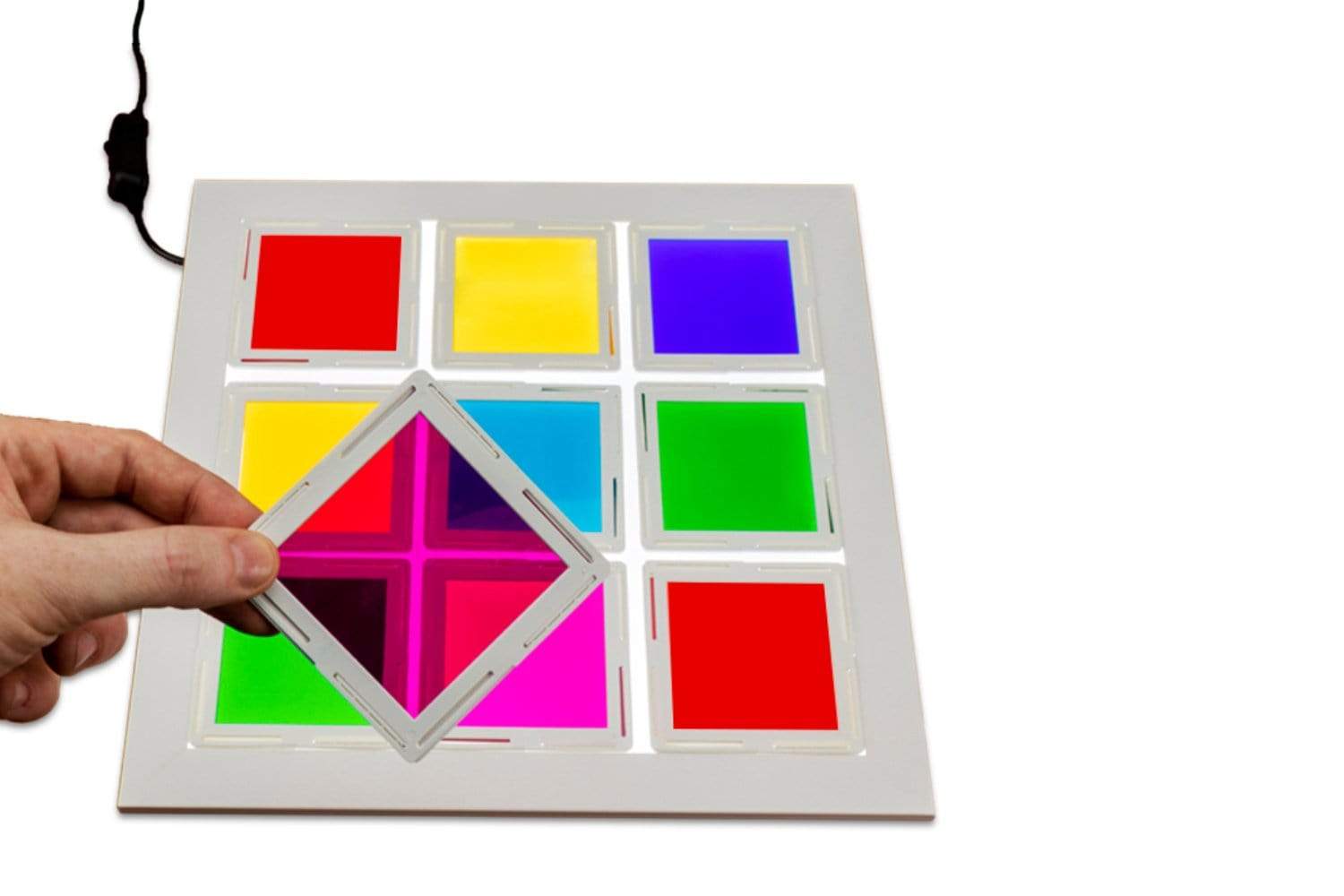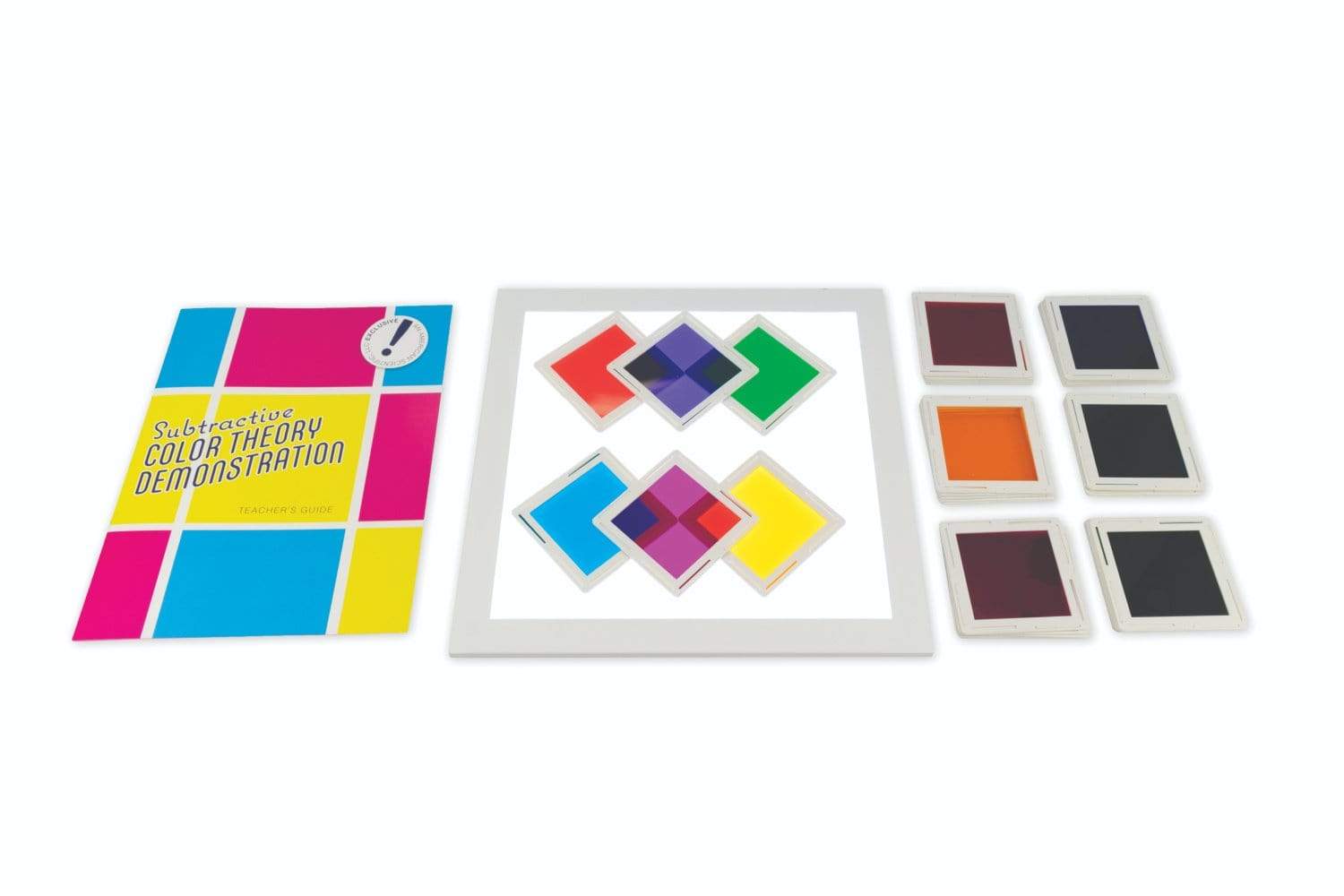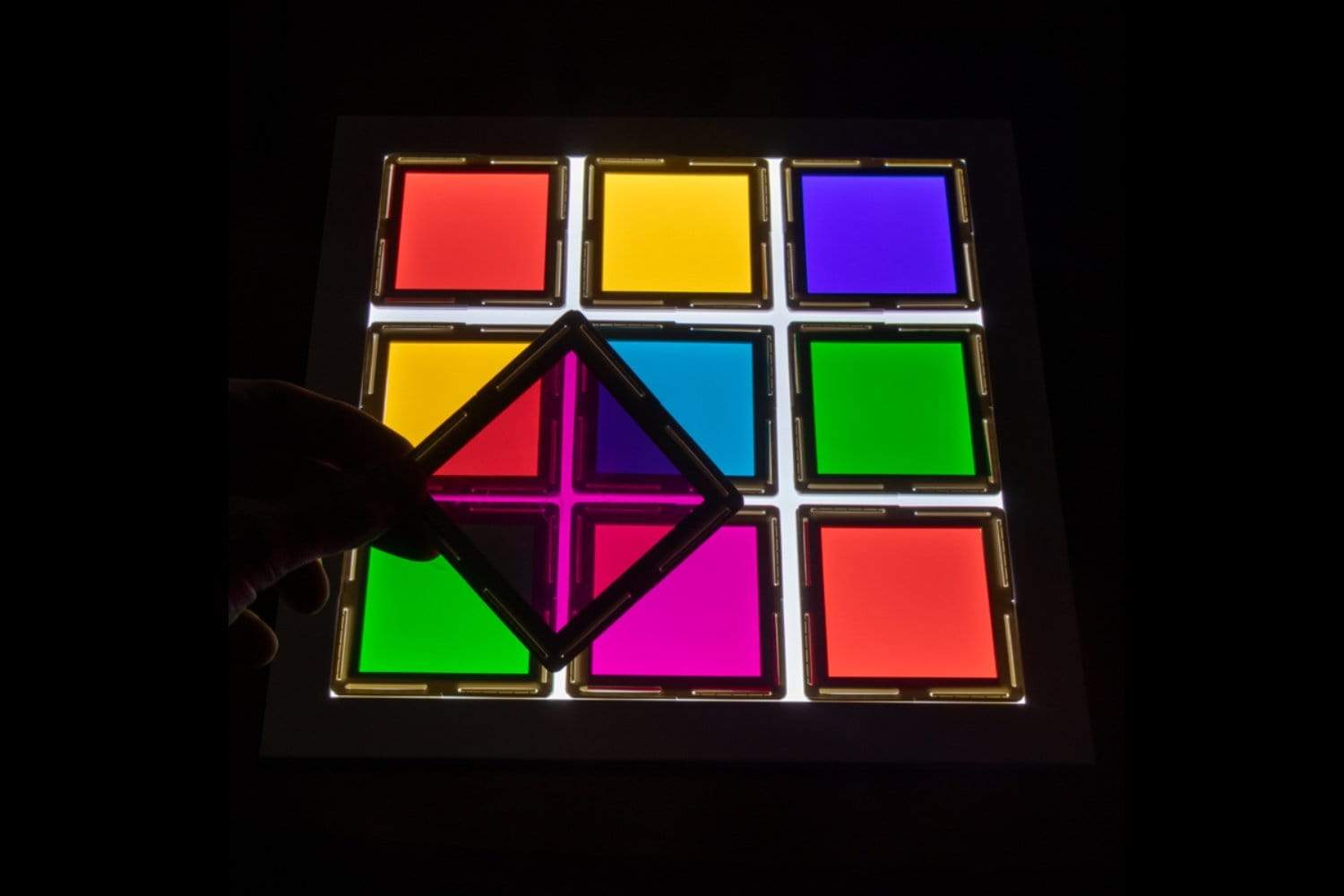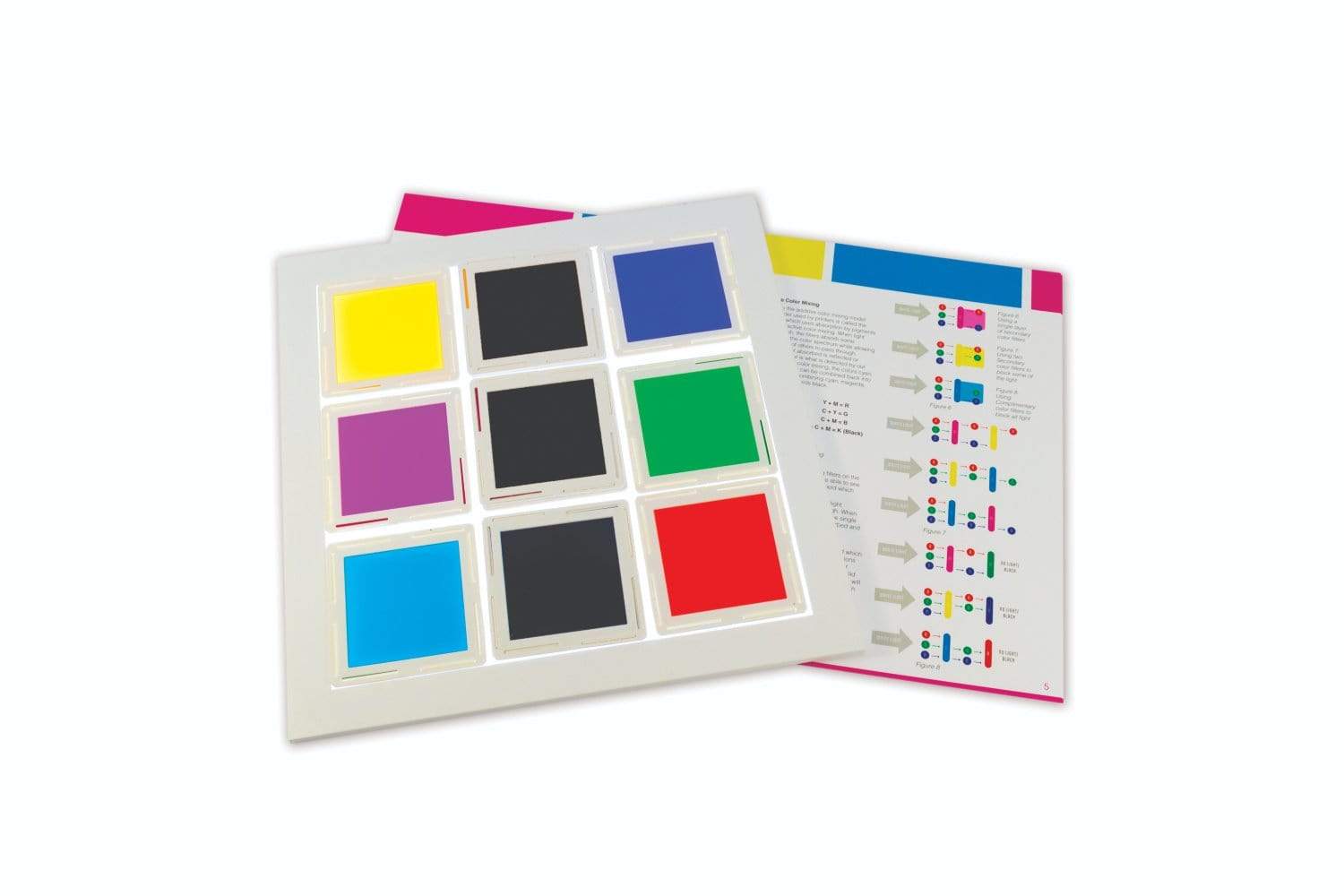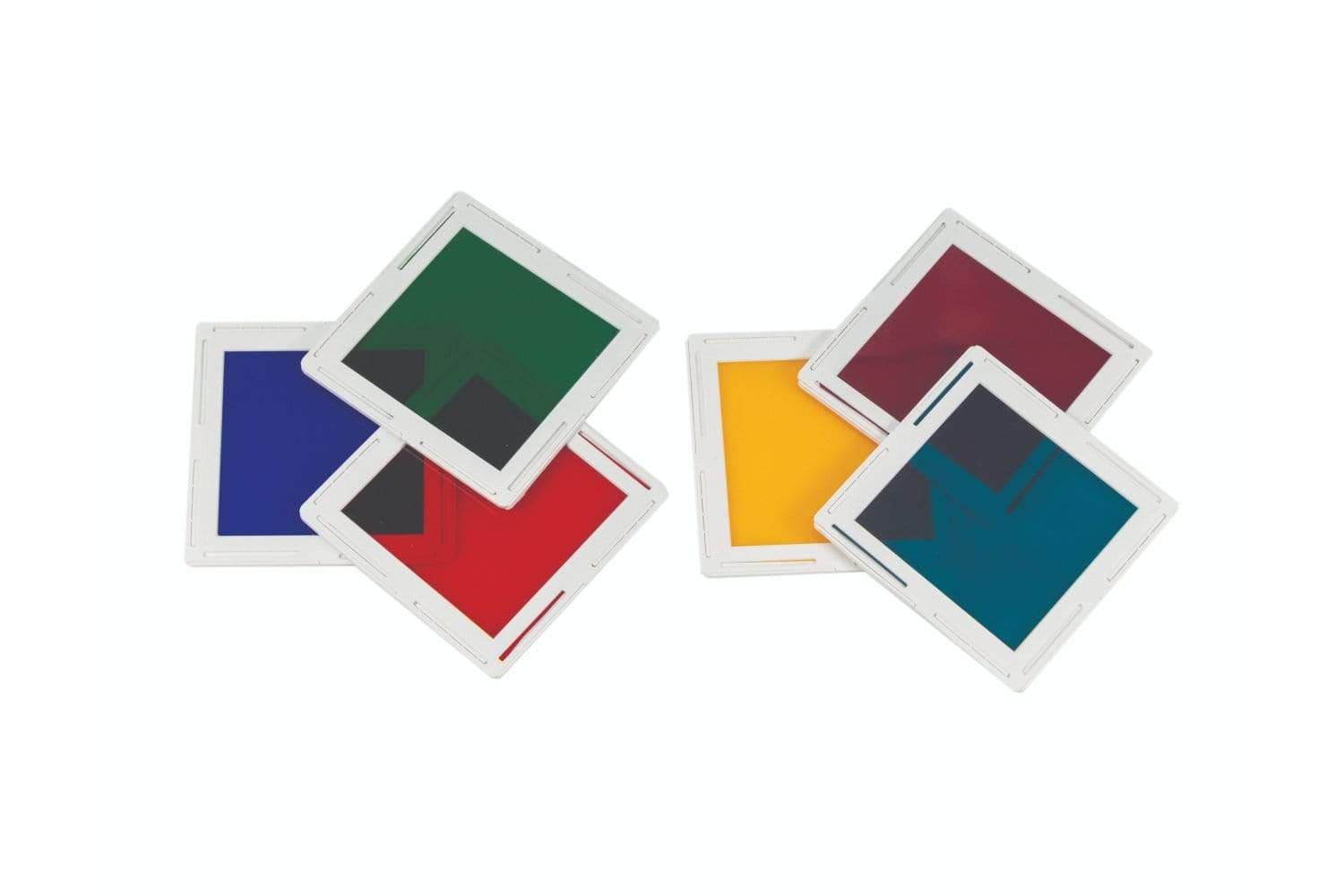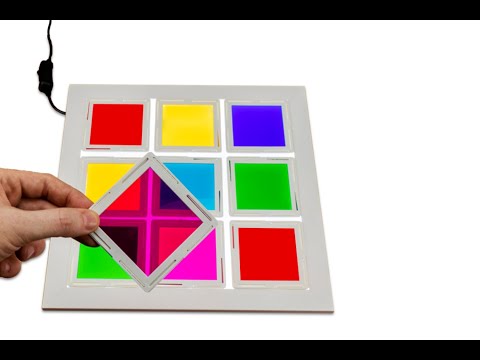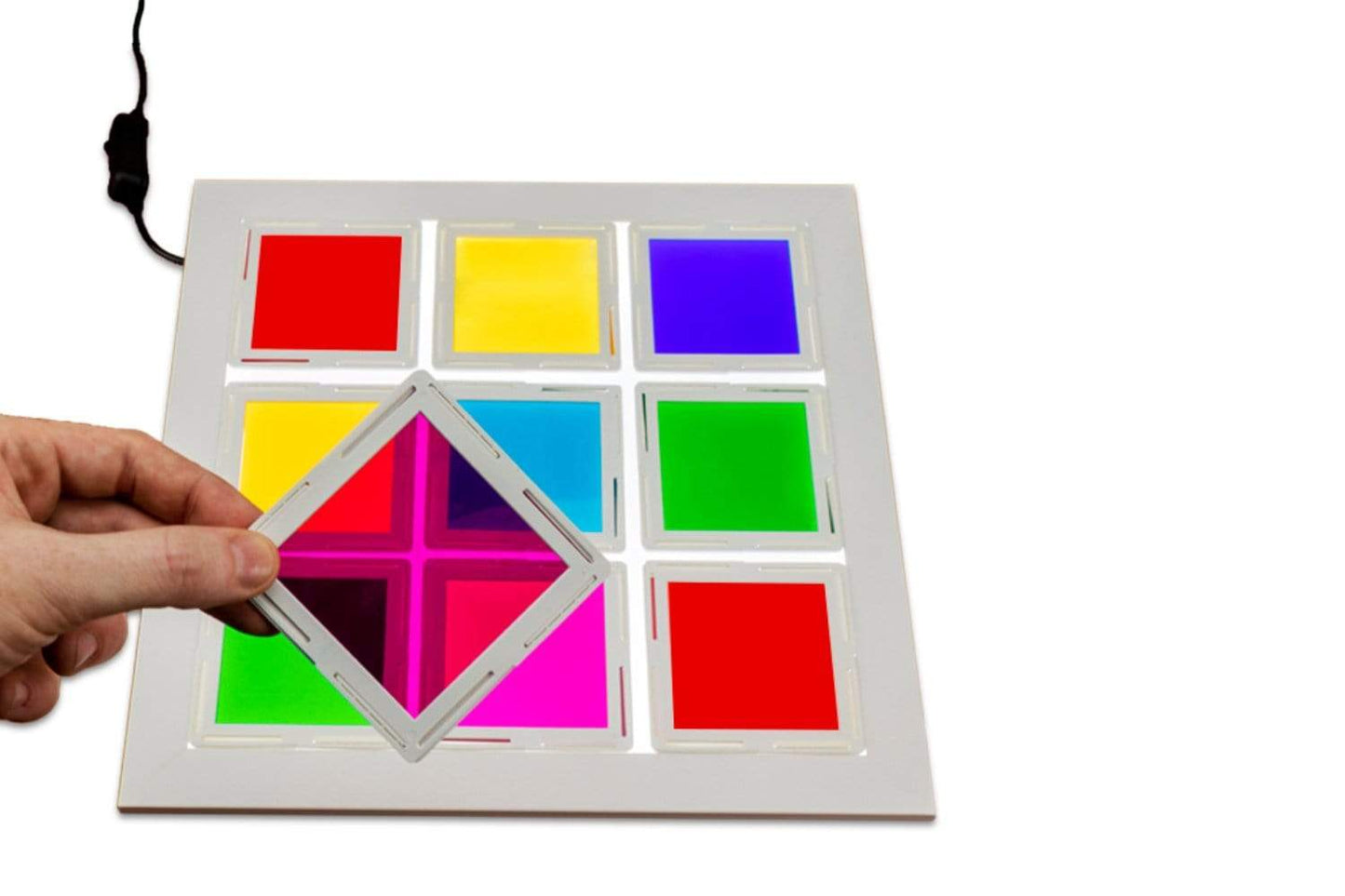
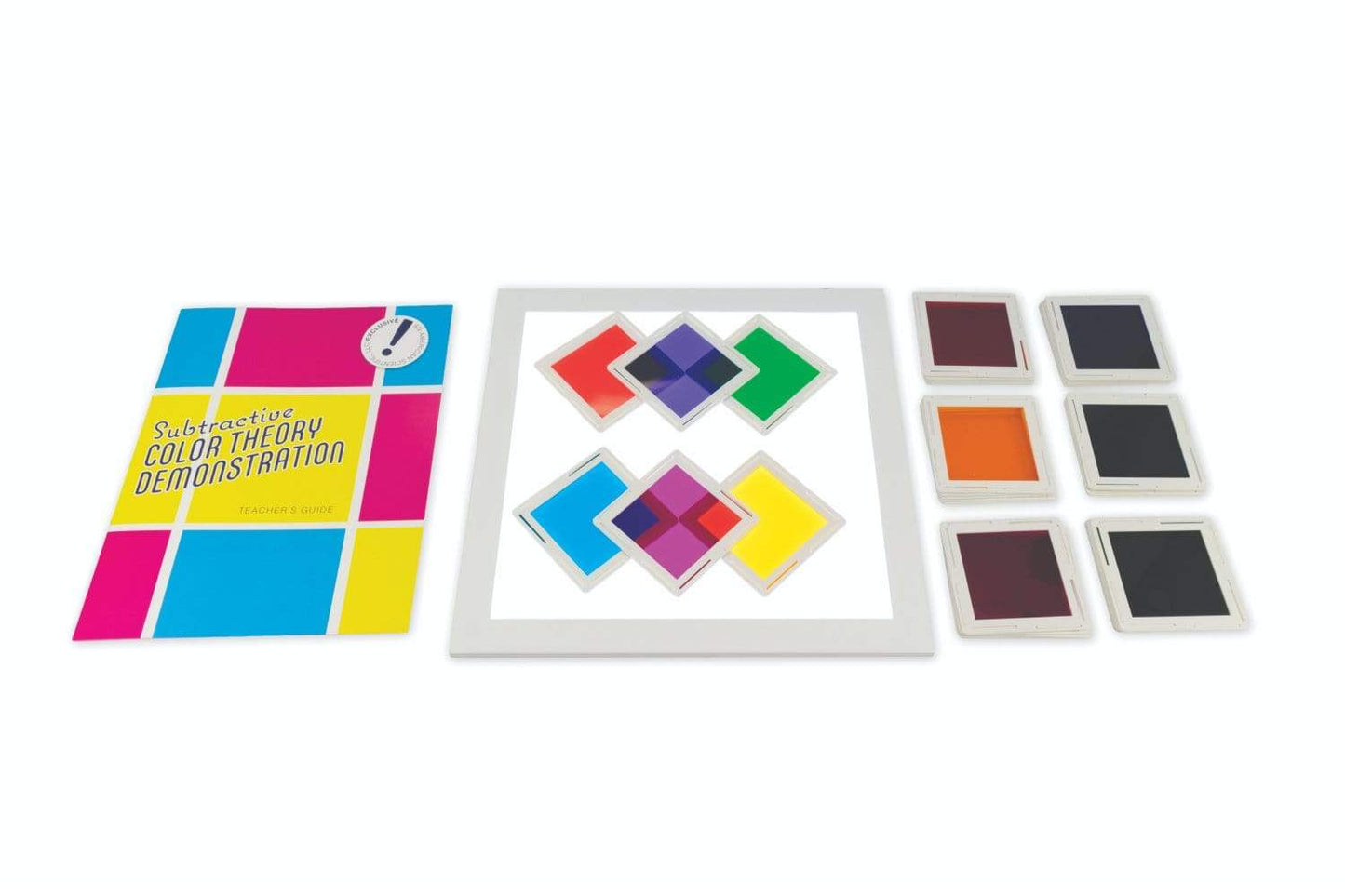
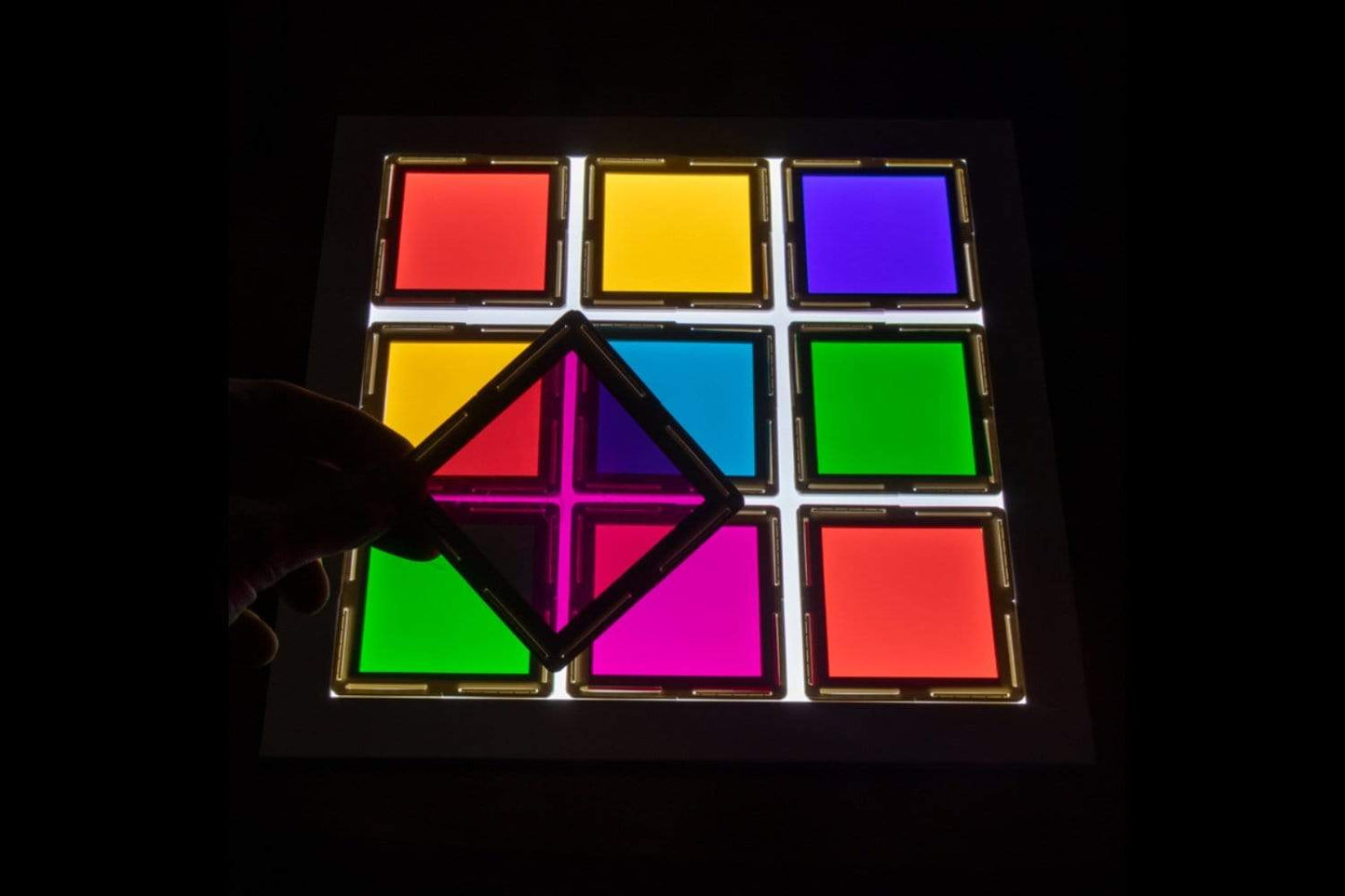
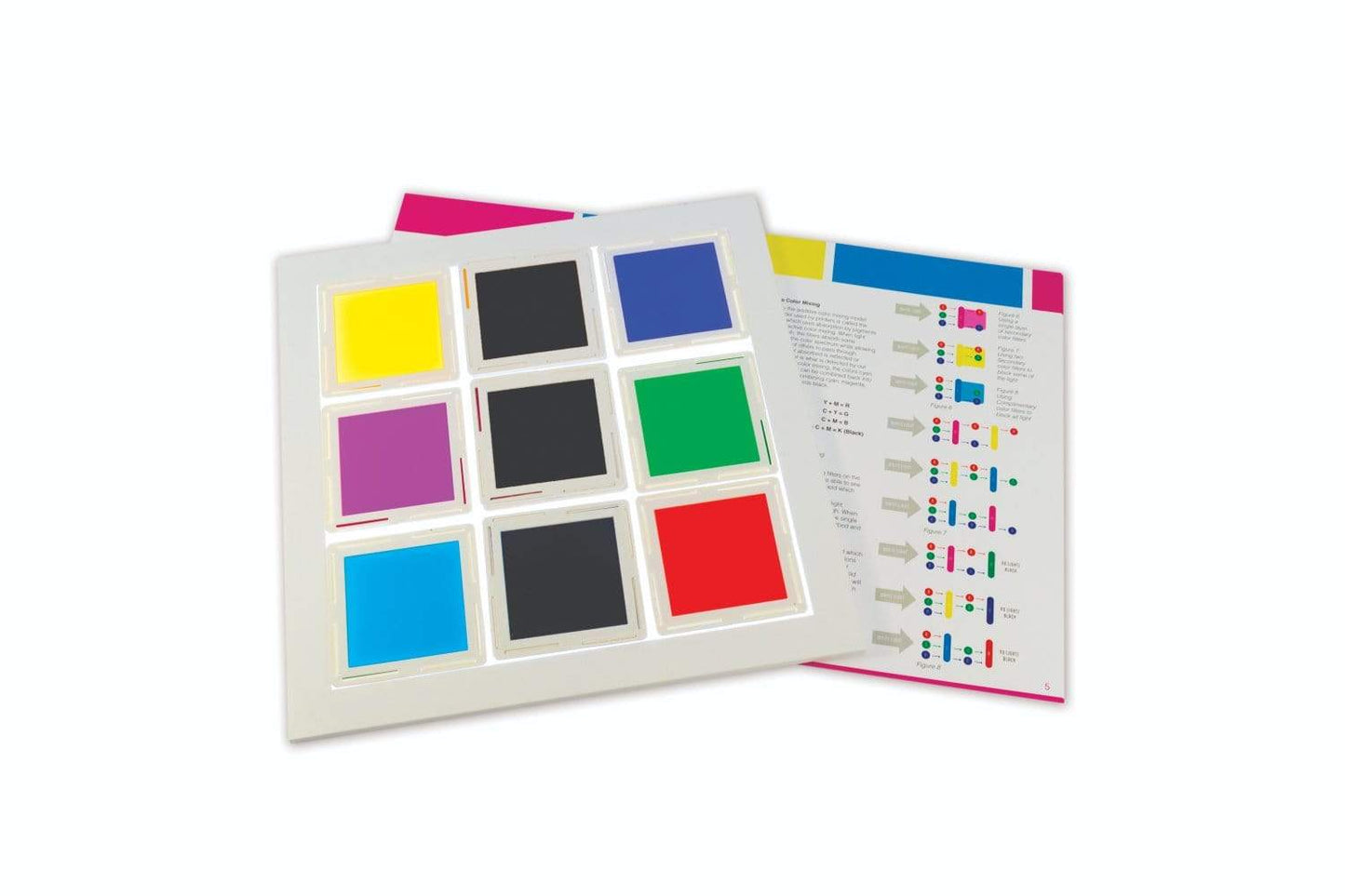
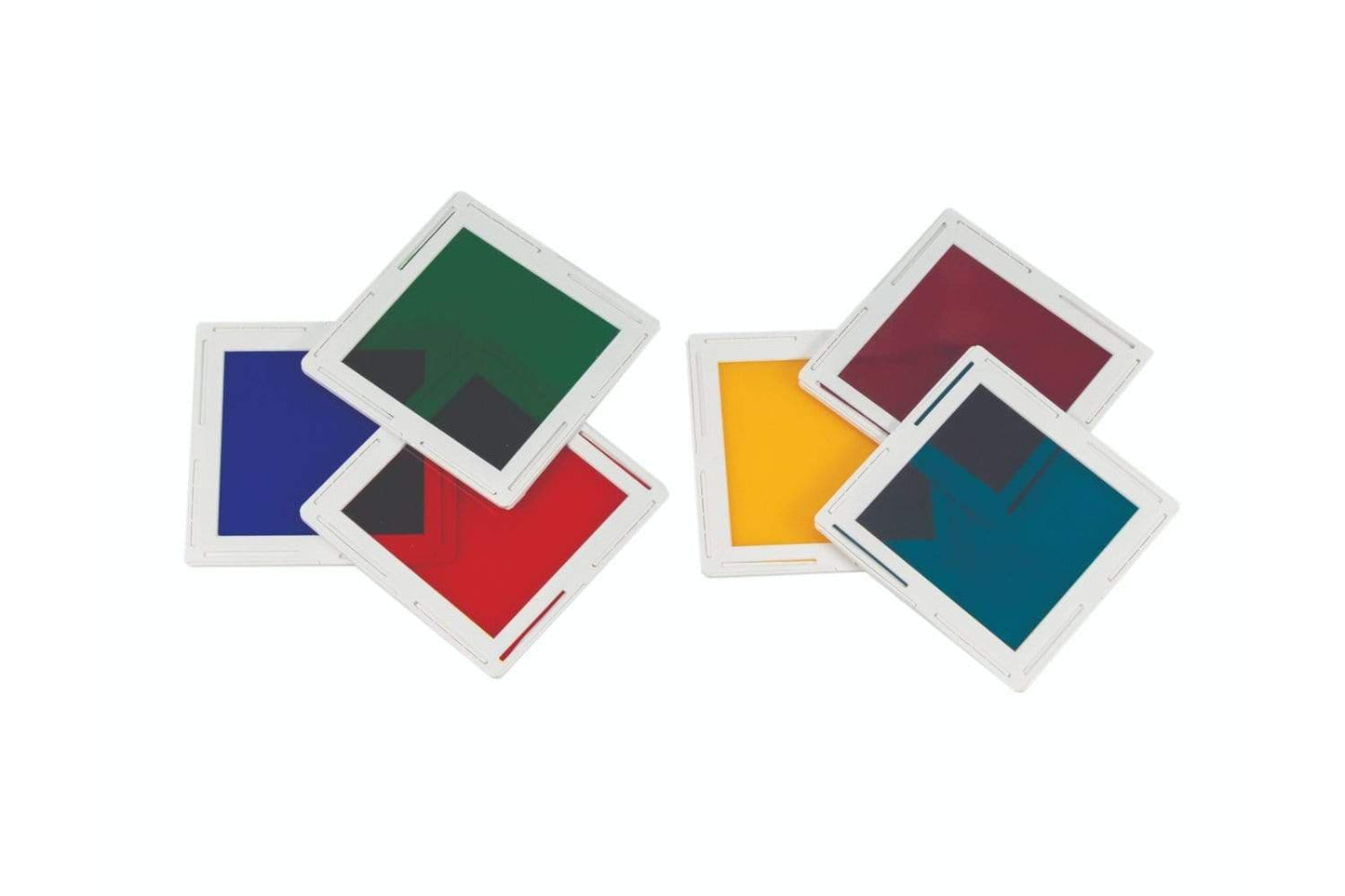
Additional Details
The Subtractive Color Theory Demonstration allows students to manipulate transparent tiles on a back-lit board to see how color mixing with light produces different results than mixing pigments. The puzzle is a great way to introduce additive and subtractive color mixing of lights versus color combinations while sliding and stacking the tiles to produce different outcomes.
- Investigate and explain the effects of different colors on the output of different colors of light.
- Differentiate results in pigment mixing versus light mixing.
- Great for understanding reflection and absorption, and Understand additive and subtractive colors.
- Model how light waves are reflected, refracted, or absorbed.
- Allow students to investigate the effects of different color combination and teach the optics and physics of coloring mixing.
Products being sold are not toys. They are for Educational / Laboratory use only. They are not for use by children 12 and under.
What’s Included
Features & Specs
Standards
| 1-PS4-2. Make observations to construct an evidence-based account that objects can be seen only when illuminated. | 4-LS1-2. Use a model to describe that animals receive different types of information through their senses, process the information in their brain, and respond to the information in different ways. |
| 1-PS4-3. Plan and conduct an investigation to determine the effect of placing objects made with different materials in the path of a beam of light. | MS-PS4-2. Develop and use a model to describe that waves are reflected, absorbed, or transmitted through various materials. |
| 4-PS3-2. Make observations to provide evidence that energy can be transferred from place to place by sound, light, heat, and electric currents. | MS-LS1-8. Gather and synthesize information that sensory receptors respond to stimuli by sending messages to the brain for immediate behavior or storage as memories. |
| 4-PL4-2. Develop a model to describe that light reflecting from objects and entering the eye allows objects to be seen. |
